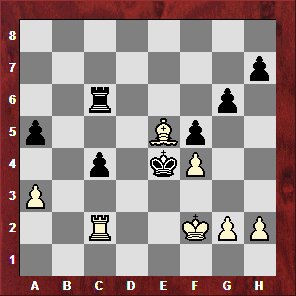As he watched his lead over Kramnik slip away, Carlsen drifted into a difficult position, defended below his usual amazing standard and lost to Ivanchuk. This is Carlsen's first loss in a long time and the first loss ever by a player rated over 28. I'm sure that theoreticians will be debating this endgame for a while, but from a teaching standpoint I find the relatively simple conversion of the final two extra pawns to be clear and great. Here are the final few moves with my comments. I couldn't get the game viewer to work properly, so the format's a bit different than usual.
Could you convert this winning rook ending against
someone rated 2872? 76...Rc7! Not the only move, but very strong. Rooks
belong behind pawns, so that they get more active every time the pawn advances.
77.Rh4 Rh7 78.Ke3 Black needs to figure out a way to make progress. The
h-pawn is very hard to win with by itself, so he manages to get his rook behind
the e-pawn. 78...Ke6 79.Ke4 Rh8! White is in zugzwang and has to retreat
his rook or king. This is one advantage of having the rook behind the passed
pawn. 80.Ke3 Kf5 81.Ke2 Kg5 82.Re4 Re8 Black has gotten the rook behind
the more dangerous pawn. 83.Ke3 h4 It's hard to queen the h-pawn, but it
can make a powerful distraction. 84.Ke2 h3 85.Kf2 h2 86.Kg2 h1Q+ 87.Kxh1 Now
white's king is forced into the corner and black finds a way to trap it there. 87...Kf5
88.Re1 Rg8 With his horrible king position, there's nothing that white can
do to stop black's pawn. 89.Kh2 Kf4 90.Rf1+ Ke3 And for the first time
ever, a player rated over 2860 resigned a rated game. Black can head for the
famous Lucena position to win the game. [91.Re1+ Kf2 forks the rook and the
checkmate threat of ra8#.] 0–1





